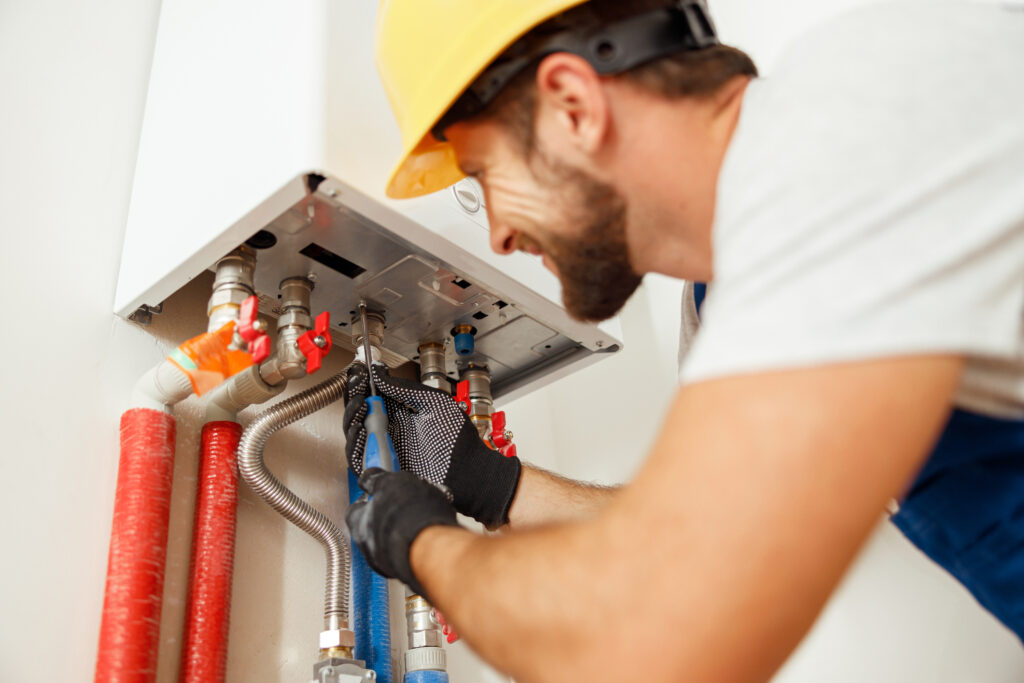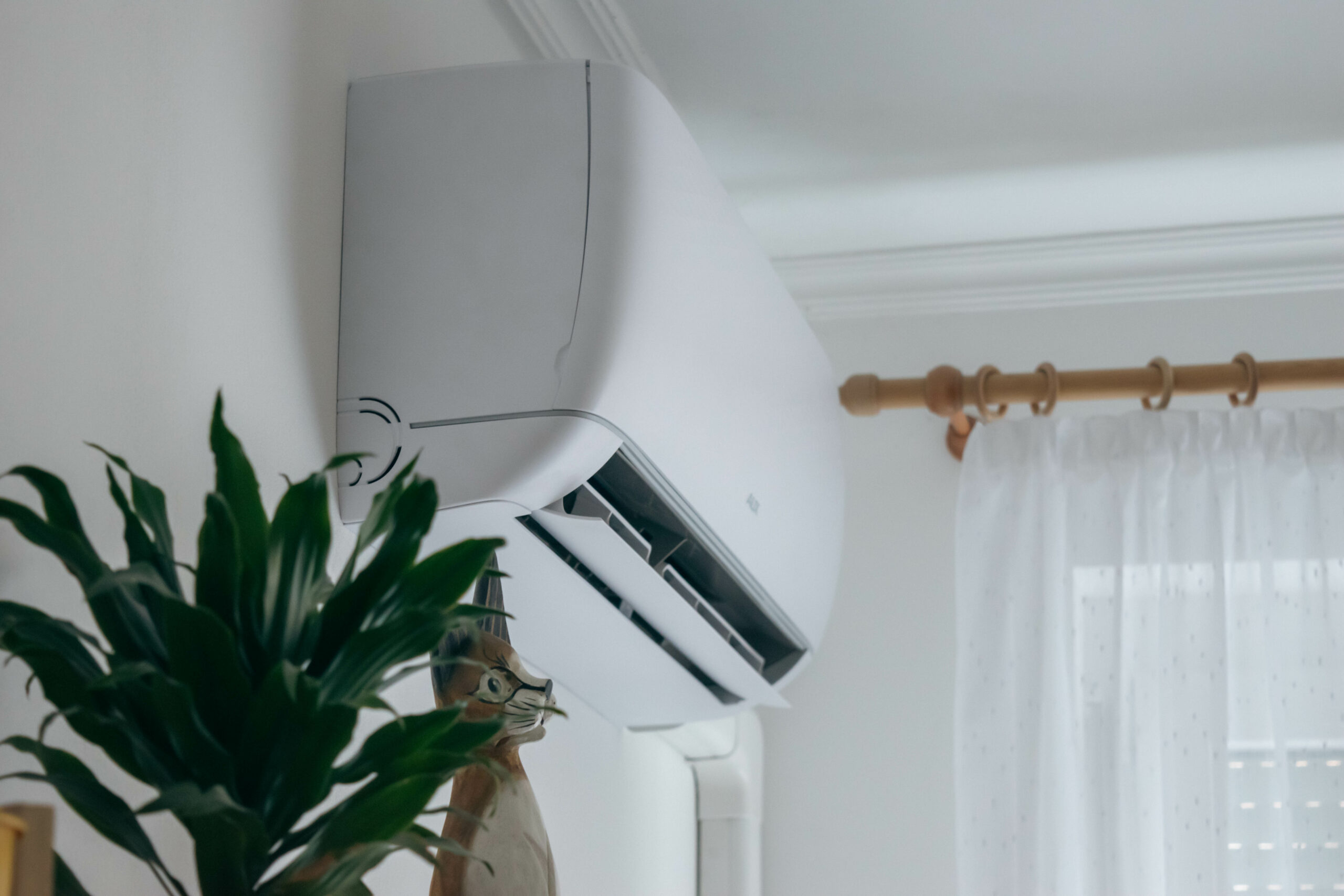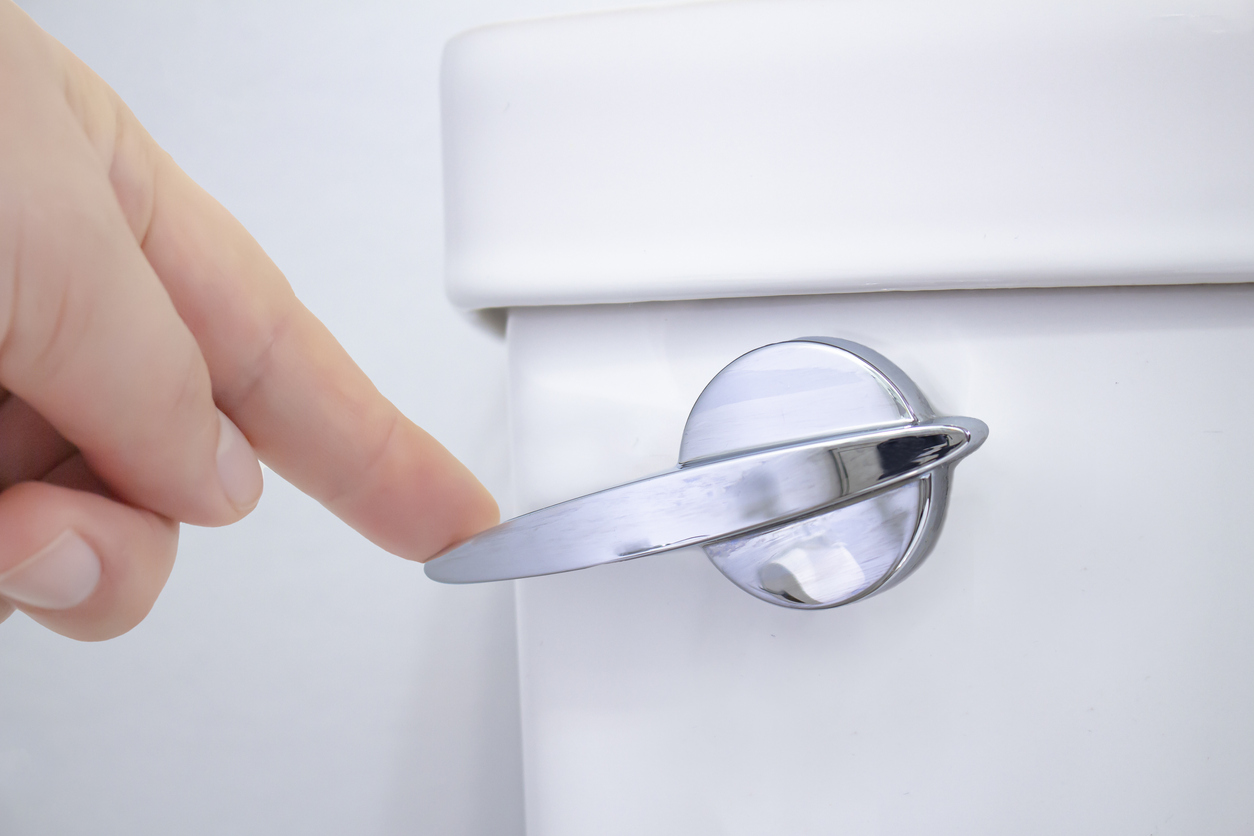How Indoor Air Quality Products Can Help Keep Your Family Healthy
When we think about air quality in terms of the environment, chances are the first issue that springs to mind are outdoor air. We picture all the usual external sources of pollution: smokestacks, automobile exhaust, litter, oil spills, fires, and so forth. When we think about measures to improve the environment, we think of reducing the use of fossil fuels, recycling, and passing legislation.
We don’t necessarily think of indoor air quality as a pressing issue on the level of the outdoor environment. But we should.
The Environmental Protection Agency (EPA) says that poor indoor air quality is one of the top health risks we face. The average American spends 90% of their lives indoors, so it makes sense that much of our physical health depends on maintaining a decent indoor environment.
Indoor air quality can be harder to think about because so much of the things we do every day without thinking contribute directly to the quality of inside air: cooking, cleaning, doing laundry, even watching TV all have some effect on our living spaces.
Many things cause indoor air quality to deteriorate. Contaminants can get in through ventilation systems. Moisture in dark corners of the home can evolve into mold and mildew. Certain cleaning products and pesticides contain harmful chemicals that we freely spray into the air around the house. Even cooking can produce organic compounds that can settle in the home and have a lasting impact on air quality.
Poor indoor air quality causes or exacerbates many of the same personal health issues as outdoor air can: lung and respiratory diseases, asthma, allergies, even cancer. On a smaller scale, it can simply make our lives more difficult by affecting mood, sleeping patterns, and concentration. Producing and preserving better indoor air quality is a matter of maintaining our families’ health.
Thankfully, indoor air quality products can help. Using properties of science and technology, several devices and accessories can help improve inside air and produce a cleaner, healthier living environment. While taking steps and improving our habits will always be a primary part of keeping the air clean, some of these products can provide support in keeping inside air quality high.
What are indoor pollutants?
Once again, it’s easy to identify most of the sources of outside air pollution. The objects and products that cause poor air quality indoors aren’t quite so obvious. But they can take many forms and be supported by many different household items — everything from cookware and cleaning products to potted plants and rugs.
Indoor air pollutants are commonly divided into two categories:
Gaseous pollutants – Airborne, inorganic pollutants like carbon dioxide, carbon monoxide, sulfur dioxide, nitrogen dioxide, and nitrous oxide are produced from many of the everyday, indoor combustion appliances you find in every home, including ovens, gas stoves, water heaters, washers and dryers, fireplaces and more.
Particulate matter – We’ve heard a lot about particulate matter throughout the COVID-19 pandemic. The EPA defines particulate matter as “a complex mixture of extremely small particles and liquid droplets.” These molecules of solid and liquid pathogens suspend in the air. Some of the components PM can be comprised of include acids, organic chemicals, soil, and dust. They can originate from cooking, using the fireplace or candles, smoking, unvented space heaters, and certain tools used in crafts or hobbies.
Some of the specific forms of pollutants take indoors include:
Moisture. Damp areas can be a breeding ground for molds, mildew, and fungal growths. Common spots of moisture contamination include air conditioning systems, water heaters, basements, crawlspaces, plumbing systems, windows, and walls.
Radon. This organic, inert gas is a colorless, odorless substance that occurs naturally in the earth’s atmosphere. It breaks up easily outdoors, so it’s not much of a threat to those on the outside. But when it gets inside homes or workplaces, elevated levels of radon can cause health problems like lung cancer.
Volatile organic compounds (VOCs). Certain substances, both solid and liquid, produce a broad range of chemicals that thrive indoors and can result in health problems. Cleaning products, disinfectants, cosmetics, paints, pesticides, aerosol sprays, varnishes, and hobby-related products can release these compounds. VOCs can even be produced from some furnishings and office equipment.
Combustion products. Appliances and tools that use natural gas, fuel, wood, coal, kerosene, and other power sources can produce harmful compounds like carbon monoxide, particulate pathogens, sulfur dioxide, and more. Combustion products can also produce water vapor, which can be a conduit for other contaminants to get inside the home.
Dust. House dust is more than just dirt: it’s a combination of hundreds of materials that fall off everything and everyone in the normal course of a day. Dust can contain hair, bacteria, dust mites, insect remains, skin cells, soil, pollen, even small bits of plastic — and it includes all the contaminants and pathogens that have attached themselves to those particles.
Pet dander. Sadly, the shed bits of skin from our beloved dogs, cats, hamsters, and birds can be major sources of indoor air deterioration. Particles of pet dander easily adhere to beds and furniture and can cause severe allergic reactions to those especially sensitive to it.
Other allergens. Besides dust and pet dander, other allergens commonly found within the home include pollen, certain chemicals, even perfume or chlorine.
Asbestos. This natural, heat-resistant collection of soft fibers has been shown to cause cancer when exposed to certain individuals. Although its use has been heavily regulated and banned in certain applications since the 1980s, trace amounts of asbestos are still used in some consumer products.
Bacteria and viruses. Most bacteria are relatively harmless, although a few strains have been shown to cause some adverse health effects. Viruses are parasitic organisms that almost always cause disease, including the common cold, influenza, herpes, pneumonia, and illnesses caused by the COVID-19 coronavirus.
The effects of positive ions
It may surprise you, but one big reason indoor air pollutants cause so many adverse health effects or symptoms has to do with electromagnetism. All organic matter is surrounded by a field of energy in the form of atoms or molecules that carry either a positive or negative charge. These particles are called ions.
Most cells in our bodies carry a negative charge. When our bodies absorb positive ions in sufficient number, they affect several our normal brain and body functions – and not, despite their name, in a good way. They can cause physical maladies like breathing problems, headaches, and fatigue. They can also affect the mood and cause behavioral issues like anxiety, loss of focus, irritability, and exhaustion.
Most of the pollutants we’ve discussed so far – chemicals, dust, mold, pet dander, and so forth – carry a positive charge. What’s worse, modern society has given us many more sources of positive ions. They can be generated by electronic devices like TVs, smartphones, and computers, as well as fluorescent lighting, certain upholstery, and paint. Positive ions are, unsurprisingly, especially prevalent in crowded or urban areas.
Combatting indoor air pollution is largely based on the concept of neutralizing or reducing the presence of positive ions. Many products are designed to attack pathogens and contaminants at that electromagnetic level.
Indoor air purification strategies
We now know that indoor air pollutants are more common and dangerous than we may have initially thought. How, then, do we go about finding solutions for improving indoor air quality?
The first step is understanding what we have to do – exactly what kinds of processes or actions our air quality products are supposed to perform. There are several ways to approach the problem of indoor air pollution:
Elimination. The easiest strategy to understand is simply to get rid of the materials or appliances that help to create a toxic indoor environment. This also means changing some of the behaviors or activities we undertake that employ the use of harmful chemicals or produce bad air.
Some of the products and processes we need to remove are fairly easy to live without. It’s not hard to use environmentally friendlier cleaning supplies, maintain clean air conditioning vents, use exhaust fans correctly, or alter our methods of food preparation. Quitting smoking is seldom easy, but along with saving one’s physical life, it can dramatically improve the air we live in.
Other eliminations aren’t that easy or practical to execute. Pet dander is one major contributor to poor indoor air, but few families are willing to give away their beloved dogs or cats for the sake of cleaner indoor air, nor should they. It’s also not possible to get at all the sources of indoor air pollution, like internal HVAC ducts, remote corners of attics and basements, wall insulation, or water heaters.
Elimination is a combination of consciously changing certain routines and habits, along with taking other mitigation measures for other sources of pollution we can’t perceive.
Filtration. Filters separate specific particles from a physical mass (air, water, coffee) and trap them so they don’t travel within the substance to their ultimate destination (a cool living room, a drinking glass, a commuter mug). Filtration is a major strategy for improving inside air quality.
The most common application of air filters within the home, by far, is in heating and air conditioning systems. Air ducts process and conduct air that’s constantly moving through them from the outside. Because this outside air contains many natural and unnatural pathogens and sources of pollution, it’s got to be filtered before it circulates and reaches the area it ultimately hits.
Air filters are typically installed behind return air ducts in the home, so the air gets filtered before it reaches the mechanism that cools or heats it before it reaches the house. Not all air filters are created equal – it’s much more time- and cost-effective to spend a little more on a high-quality air filter than to spend less for an ineffective one.
Ventilation. All of us, at some point or another, have been inside a stuffy room. Or maybe we’ve accidentally burned dinner on the stove and created a plume of smoke. Or we’ve seen pools of moisture collect in certain dark places in the home. All these scenarios are typically improved, at least temporarily, by opening a window, if there’s one nearby.
Ventilation is the act of circulating new, fresh air into a closed-off environment. The air in an inside, enclosed area is simply more concentrated and compact than outside spaces. That goes for all the particles found in the great indoors – including contaminants from fireplaces, ovens, tobacco, mold, or burnt pizza. Ventilation agitates the inside air to dilute the concentration of pollutants and pathogens.
One possible problem with ventilation, of course, is that the unfiltered outside air it lets in also has polluted particles and contaminants of its own. But the principle of ventilation is still important and valuable as an air purification strategy. Even if you open a window for a brief time, the flush of gently moving air acts to dilute and reduce the concentration of the inside air it mixes with.
Ionization. The concept of ionization is a relatively recent strategy that’s used by many manufacturers of air purification technology. The theory behind ionization is to supply air particles around a certain device with a negative charge. Since ions are naturally attracted to their opposites – negative ions attract positive ions – the two particles collide and join to form larger particles.
The combined ions eventually gravitate and settle on air filters. These ions attract bacteria and viruses as they reproduce; once these pollutants bond with the ions, they’re neutralized, broken down, and destroyed.
Ultraviolet light. UV rays have been used as a disinfectant for water and air for years. Short-wave ultraviolet light is thought to change the construction of microorganisms’ DNA, either destroying or inactivating the contaminants within.
In purification processes using this strategy, the air is forced through a chamber containing light bulbs that generate UV light. The effectiveness of UV air purifiers is contingent on certain conditions, such as the strength of the rays, the bulb construction, light dosage, and length of exposure. Since they emit radiation, UV air purifiers are most commonly used inside air condition ducts or passages, away from human sight and exposure.
How certain indoor air purification products work
Indoor air purification is a thriving industry across the world, as scientists and manufacturers collaborate on finding ways to make our everyday living spaces safer and freer from the many contaminants that get trapped inside. Some of the most common products include:
Heat recovery ventilators (HRVs). An HRV expels contaminated air generated by bathrooms and kitchens and removes it to the outside. It then draws fresher air loaded with oxygen back into the home. The two airstreams travel in separate ducts, so they don’t mingle, although they pass through a point that transfers heat from the exiting air to the fresh air.
Air filters. Several distinct types of air filters remove particulates from air streams that enter the home. Relatively inexpensive, disposable filters with high Minimum Efficiency Reporting Value (MERV) ratings can trap dust, fungus, pollen, mold, and pet dander, in a variety of large and small sizes.
Electrostatic air filters are more efficient. They combine filtration material with static electric charges that attract and retain moving particles. Most electrostatic air filters are designed to be permanent and don’t need to be frequently replaced.
Air purifiers. Air purifiers use the same methodology as filters, only in an electrically powered device that uses High Efficiently Particulate Air (HEPA) certified filters to trap particles in very fine sieves. HEPA filters are estimated to clear out 99.97% of all airborne particles that are bigger than 0.3 microns (0.0003 millimeters) in diameter or width.
Ionizing purifiers. These devices emit ions through an immensely powerful energy field known as a corona discharge. Molecules transporting through that field pick up a negative or positive charge, changing their structure. Dust and other relatively large contaminants are most likely to receive these charges since they’re easy targets. After the particle is charged, it immediately scurries to the nearest particle with an opposite charge. Once they combine, these newly neutral particles get heavy and drop out of the air.
Humidifiers. Humidifiers emit water vapor to increase the level of moisture in the surrounding air. While humidifiers aren’t specifically built for air cleaning purposes – in fact, they’re entirely different devices than air purifiers – they do have filters that can trap certain allergens, dust, and pollutants to a certain extent.
Ultraviolet lamps. UV lamps built for air purification usually work in consort with other devices, especially HEPA filters, to decontaminate surrounding air. Exposure to UV light can deactivate the harmful particles of mold and bacteria. Of course, it can also radiate onto humans, which is why most UV lamps are either incorporated within other purification devices or used in places humans don’t generally have constant access to, like air conditioning ducts.
Exhaust fans. Like HRVs, fans and exhaust systems improve internal ventilation by sucking out moisture and pollutants and moving them to the outside, replacing it with fresher air that comes into the living space. Certain fans, known as non-ducted fans, also have a charcoal filter that traps harmful compounds before returning air to the inside.
Top indoor air quality service
The Comfort Doctors at T.E. Spall & Son perform indoor air quality testing for your home or office and have a wide selection of products and devices that greatly improve your family’s health. Contact us today to find out more.






